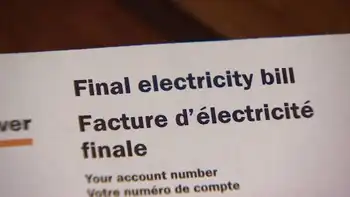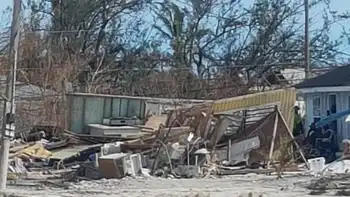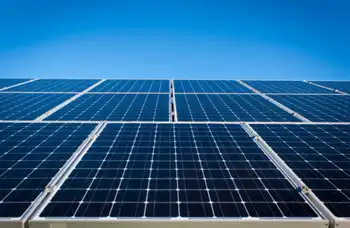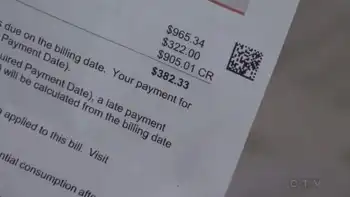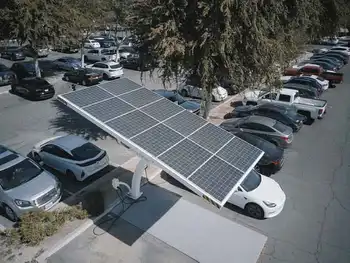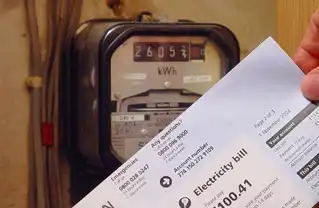Coal users trying to redirect Congress on global warming
By The Hill
Protective Relay Training - Basic
Our customized live online or in‑person group training can be delivered to your staff at your location.

- Live Online
- 12 hours Instructor-led
- Group Training Available
Massive new federal spending is needed, he says, to ensure that there is enough electricity to meet national demand in a way that doesnÂ’t exacerbate global warming.
For English and the members of the National Rural Electric Cooperative Association (NRECA), a powerful lobbying group that has broad grassroots reach and a deep-pocketed political action committee, one priority is a $12 billion per-year spending effort to help low-income households make their homes more energy-efficient.
“It’s a big number” that will be difficult to win given Democratic “pay as you go” budget rules, English acknowledged.
“In a tight budget, that’s always the question: What’s our priority?”
The lobbying effort by NRECA is one example of how groups wary of congressional efforts to curb global warming are trying to redirect the momentum to pay for expensive new federal spending programs. If the projects are successful, they could take some pressure off coal users to pay for their own emissions cuts in the near term.
English said the energy efficiency effort would help keep consumer electricity bills reasonable.
The effort to curb greenhouse gas emissions is routinely equated to the development of an atomic bomb or the campaign to fight World War II. Curbing global warming is so expansive a challenge that the federal government will have to take the lead role.
In another example, mining companies, labor groups and for-profit electric utilities are joining NRECA in lobbying Congress to create a fund that would spend around $2 billion a year to pay for a technology to capture carbon dioxide emissions before they reach the atmosphere. The gas would instead be injected back into the earth, where it would sit under an impermeable layer of rock, hopefully forever.
The government has averaged around $100 million a year on spending to develop the technology, but it remains prohibitively expensive. The $2 billion figure comes from an estimate in a study conducted by the Massachusetts Institute of Technology. Total spending would approach $20 billion.
In a March letter to Congress, the National Mining Association and United Mine Workers of America complained that “inadequate incentives exist to spur the development and early deployment of CCS technologies in the power generation sector. And the lack of a reliable, substantial and sustained source of funding from the federal government, in partnership with industry, exacerbates the problem.”
“If this is truly one of the greatest technological challenges facing mankind, then what better time to mobilize the assistance of the federal government in partnership with the private sector?” said Kraig Naasz, the president and CEO of the National Mining Association.
“If climate change is inevitable, we are losing precious, precious time in developing this technology.”
Other groups like the Center for American Progress have called for new spending on carbon sequestration technology. Environmental groups are supportive too.
But some worry that the coal users and producers are lobbying for additional spending as a climate cure-all that negates the need for actual emissions caps such as those called for in the climate bill written by Sens. Joe Lieberman (I-Conn.) and John Warner (R-Va.) that will be on the Senate floor next month.
“The question is, where is the money going to come from with appropriations so tight?” said Jeremy Symons of the National Wildlife Federation. “We shouldn’t pretend that magic money will appear for bold new energy directions without the essential ingredient of a cap-and-trade program.”
Climate bills like Warner-Lieberman create an auction of emissions allowances that will provide money to pay for carbon sequestration and other technology efforts to help companies meet their emissions caps, Symons noted.
Plus it creates a market-wide incentive to shift away from conventional coal plants, he said.
That will be a big shift for NRECA members; more than 80 percent of the power co-ops use comes from coal. By reducing emissions through energy efficiency improvements, the burden for utilities to reduce their own emissions may be reduced or at least delayed.
Instead of a broad cap-and-trade bill, Congress is likely to continue this year to play around the edges by extending tax incentives that encourage the development of renewable power, like solar and wind, and support energy efficiency programs.
English said that tax incentives arenÂ’t enough for low-income residents to replace leaky windows or old appliances that eat up electricity. A $500 per low-income household credit is needed to ensure the improvements are made.
That amounts to about $12 billion a year for five years.
This week, the NRECA is holding its annual convention where 3,000 co-op members descend on Washington to press their case in person to lawmakers.
Co-ops produce and distribute electricity to only around 11 percent of the population, but their customers are located in around 75 percent of the nationÂ’s landmass. That gives them extensive political reach.
For the members who don’t have an electric co-op in their districts, NRECA sponsors an “adopt a congressman” campaign to try to ensure they are contacted nevertheless.
NRECA, which grew out of New Deal efforts to electrify rural America, has started a new campaign to educate members of Congress and the public about the difficulty of meeting growing demand for electricity without worsening global warming trends. The effort has already generated 100,000 e-mails to lawmakers.
In addition to new spending programs, NRECA also has a number of policy changes for which it is lobbying this week.
The group has created a new renewable energy cooperative to help pay for renewable energy generation projects.
English said the effort would principally concentrate on wind energy projects in the Great Plains. But there arenÂ’t enough power lines to move electricity to the urban areas where it is needed, English said.
NRECA wants the federal government to take more control over where power lines are sited, to supercede local “not-in-my-backyard” laws that are blocking what it sees as a greater national good.
The Energy Department estimates energy demand will increase 17 percent between 2006 and 2020, which would require an additional 118,000 megawatts of power.
“In the next 10 years it will be extremely difficult to have enough electric power to meet the nation’s needs and have electric bills remain affordable. We need the government to partner with us to help avoid what we think is a very real possibility of blackouts and brownouts,” English said.





